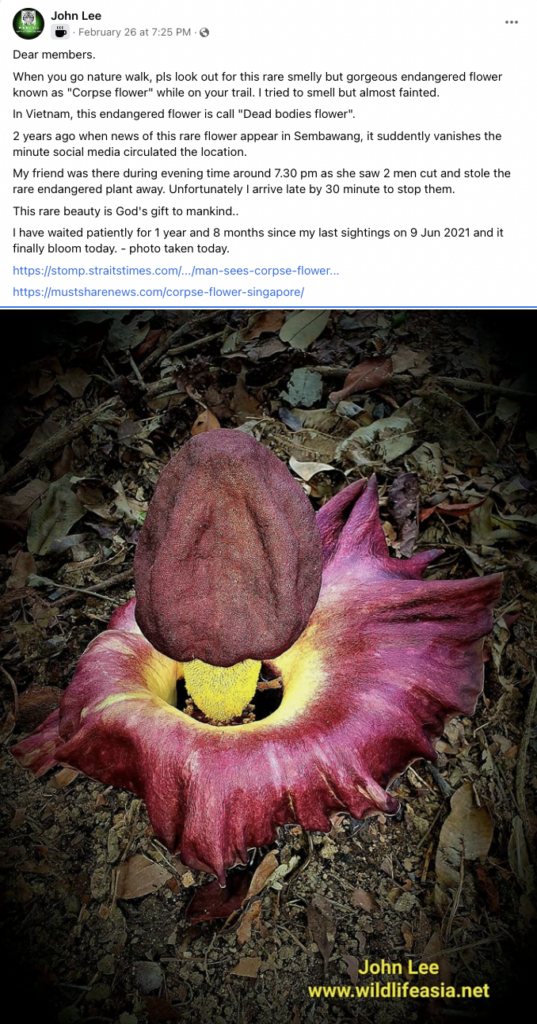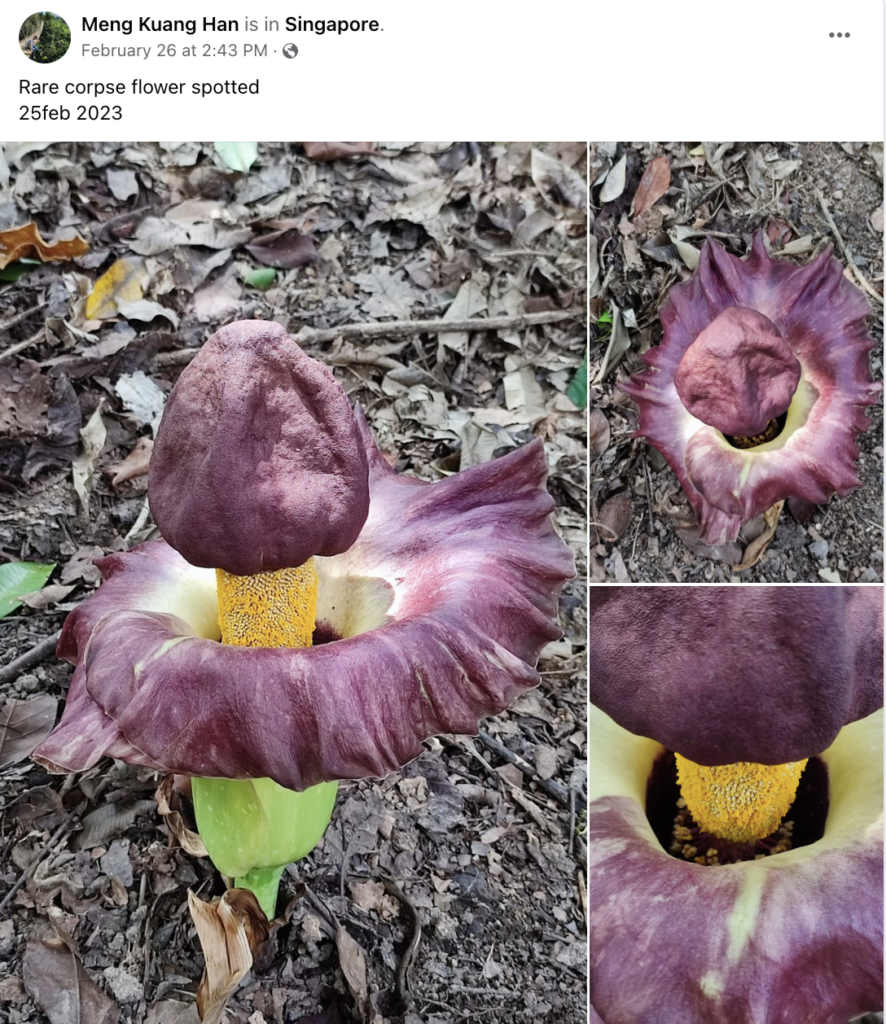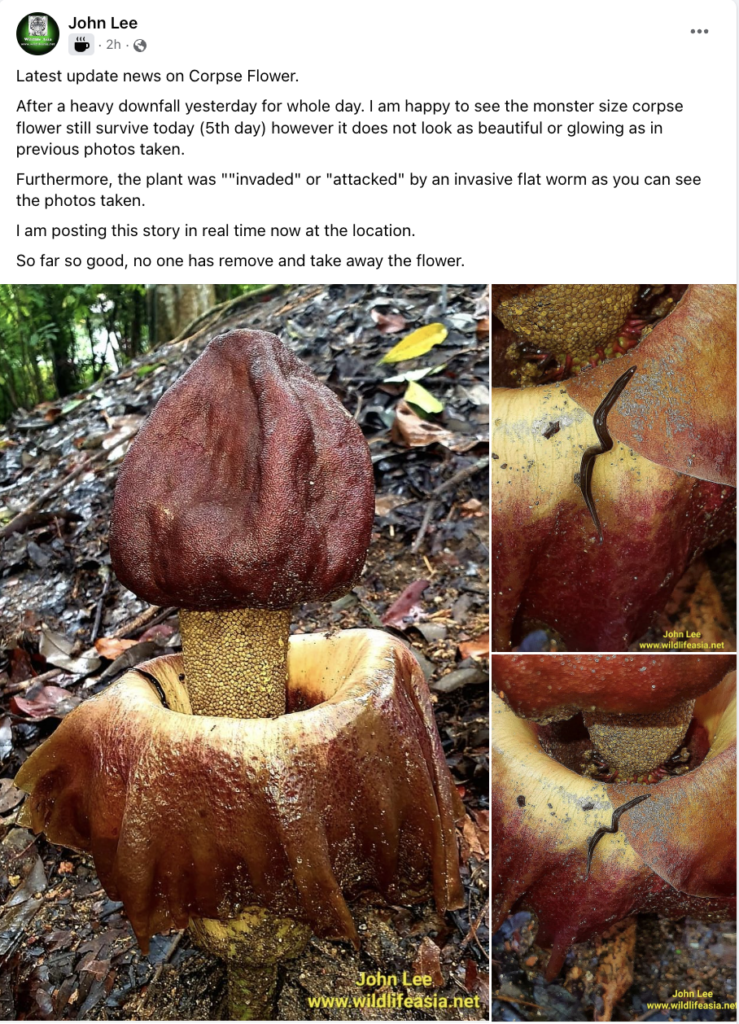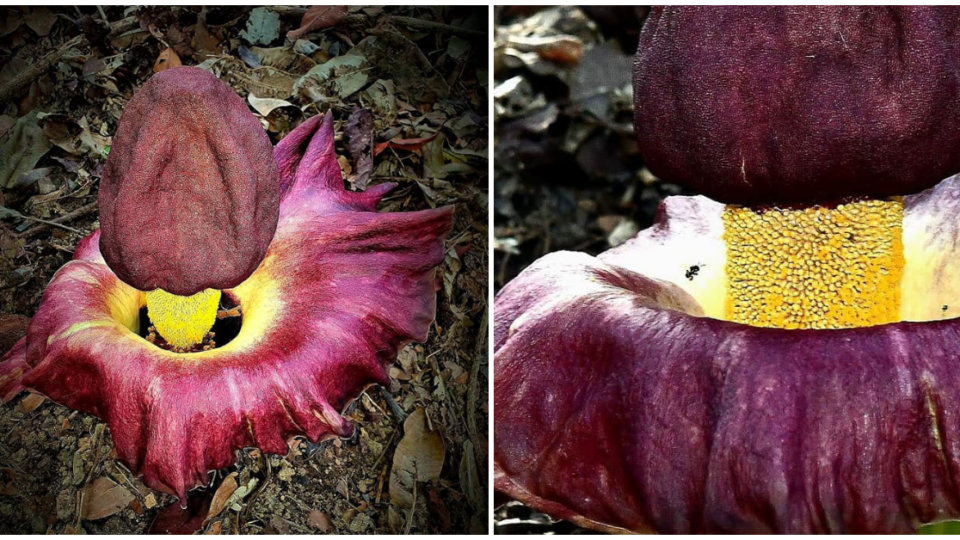Flowers are supposed to smell good and come in pretty colors – but that’s not always the case in Southeast Asia.
Native to these parts of the world are huge flowers that, to put it simply, don’t smell so good. It’s even commonly known as the ‘corpse flower’ because of how awful its stench is.
One John Lee posted about a flower he had been tracking for a while in a couple of hiking and outdoor community groups like Singapore Wildlife Sightings on Feb. 26.
He wrote, “I have waited patiently for 1 year and 8 months since my last sightings on 9 Jun 2021 and it finally bloom today. – photo taken today.” He said that the rare and endangered flower may look “gorgeous” but when he tried to smell it, he almost fainted.

Lee did not disclose the location of the flower because of what happened two years ago, when the same flower appeared in Sembawang and the flower was taken away after news about it circulated widely on social media.
“My friend was there during evening time around 7:30pm as she saw 2 men cut and stole the rare endangered plant away. Unfortunately, I arrive[d] late by 30 minutes to stop them,” he said.
Apparently, he was not the only one who spotted the flower in the wild. Another member of the Facebook page posted a sighting of the rare flower.

So what is this flower?
According to some Singapore Wildlife Sightings group members, the flower is called an Amorphophallus paeoniifolius, or the elephant foot yam – which is actually edible.
Not to be confused with the other famous smelly flower, the Rafflesia (which is actually a parasite), the corpse flower is a type of tuber plant that has leaves like peonies (hence the name ‘paeoniifolius’). It also has medicinal value.
According to the National Parks Board, the yam is edible and often used in stews and curries in several Asian dishes, particularly Indonesian dishes. The leaves and leaf stalks are also cooked and eaten as vegetables – but if not thoroughly cooked, it can cause stinging and burning.
The dried tubers can be used medicinally to cure piles and digestive problems, while the fresh roots can be used as an expectorant to clear mucus and phlegm. However, anyone with rheumatism, arthritis, gout, kidney stones and hyperacidity should exercise caution when consuming the tubers.
Once in a new bloom
As Lee mentioned, he had been waiting over a year for the flower to bloom. An interesting fact about this flower is that it only blooms once every year or two – or whenever it has sufficient energy to – and blooms for only two to three days.

Lee posted another update about the flower today. He said that he was happy that it was still blooming today – its fifth consecutive day – but does not look “beautiful and glowing”.
“So far so good, no one has remove[d] and take[n] away the flower,” he said.
Check out these other stories:




